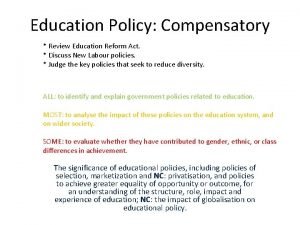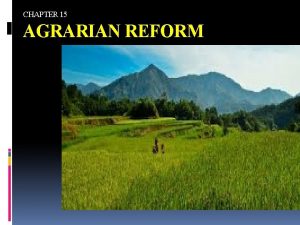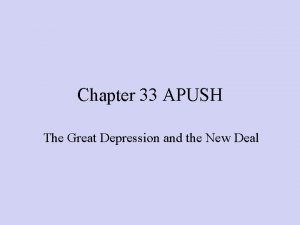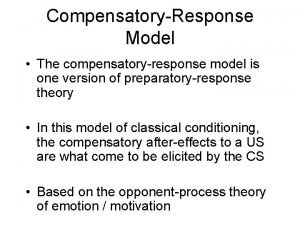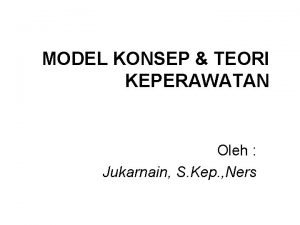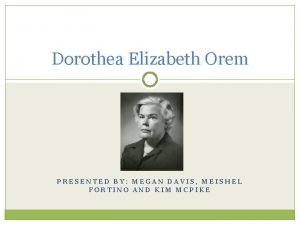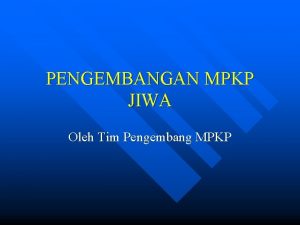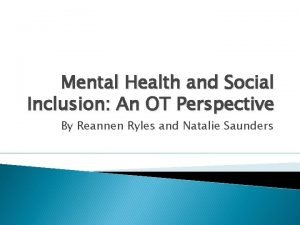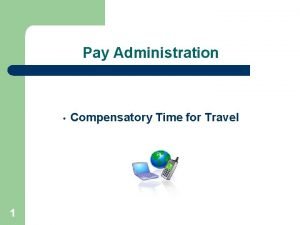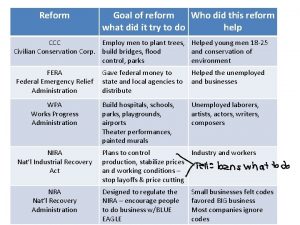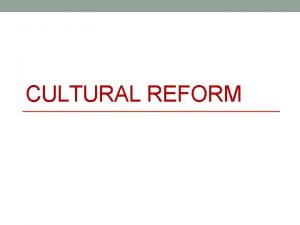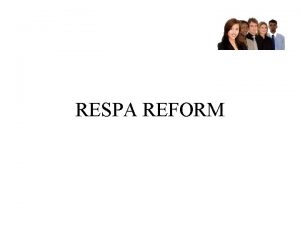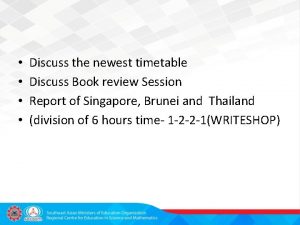Education Policy Compensatory Review Education Reform Act Discuss


















- Slides: 18

Education Policy: Compensatory * Review Education Reform Act. * Discuss New Labour policies. * Judge the key policies that seek to reduce diversity. ALL: to identify and explain government policies related to education. MOST: to analyse the impact of these policies on the education system, and on wider society. SOME: to evaluate whether they have contributed to gender, ethnic, or class differences in achievement. The significance of educational policies, including policies of selection, marketization and NC: privatisation, and policies to achieve greater equality of opportunity or outcome, for an understanding of the structure, role, impact and experience of education; NC: the impact of globalisation on educational policy.

Starter • Marketisation Recap Sheet REVIEW: Criticisms / problems of the Education Reform Act 1988: • Class Inequality • ‘Cream-skimming’ / ‘Silt-Shifting’ (Bartlett) • Parental Choice, ‘Privileged-Skilled & Disconnectedlocal choosers’ (Gerwitz) • The Myth of Parentocracy

Resources • Worksheet to make notes from Slides / Textbook.

Labour governments since 1997 have sought to do the following: -Reduce Inequality in Education - MAIN -Promote Diversity & Choice in Education - SUB

Definition / Philosophy / Aim: CEP’s are government policies which are designed to raise the achievement levels of students who come from materially and culturally deprived family backgrounds (e. g. working class and some ethnic minority groups).



After 1997, Labour introduced a number of different policies to reduce inequality in education: -Education Action Zones- providing certain areas with additional resources, e. g. money, teachers, equipment for deprived areas that have poor school results. - Sure Start – providing extra resources at nursery / primary level, e. g. teaching parents how to read to children, teaching parents the value of nutritional diets. -Aim Higher Programme- To raise aspiration of groups of pupils who are under-represented in education, you may be aware of this from school? -EMA-Payments to students from low-income backgrounds, up to £ 30 a week for Year 12 & 13 students, to encourage more w/c students to stay on at school. - Raising the school leaving age to 18, by 2015 Minimum A 01


Secondary schools continued to be encouraged to apply for specialist status, e. g. Specialst School in Maths & Computing By 2007, approx 85% of all secondary schools had become specialist status schools. It is argued that this offers parents greater choice, and raises standards of achievement, allowing schools to build on their strengths. Labour have encouraged the development of academies to raise achievement amongst mainly working-class pupils. The original law states that only failing schools were allowed to become academies, allowing them to attract extra funding from organisations, to increase attainment. Academies were originally a ‘compensatory’ policy. Now they are more related to ‘marketisation’ as any school can become one, and the best schools form alliances and exclude others, e. g. Red Kite Alliance. (Evaluation)

The National Literacy Strategy • The National Literacy Strategy was introduced by the Labour government in 1997. • It recognised that literacy standards in the UK had not improved since the 1940 s and only 63% of 11 year olds were reaching the standard of English expected of them. • It set a literacy target - that 80% of 11 year olds would reach a suitable standard in English by 2002.



1997 – 2010 – New Labour Summary A levels became AS and A 2 s, easier for W/c students Wider vocational choice – BTEC, GNVQ, AVCE and NVQ Tomlinson enquiry – aim to increase flexibility and equality (14 -19 college courses) More people to be university educated, 50% target Educational Maintenance Allowance Education Action Zones City Academies Aim Higher Programme Specialist Schools National Literacy Strategy

Criticisms • Benn looks at the paradox of New Labour, a commitment to continue Marketisation as well as tackle inequality. A contradiction? EMA encouraged Post-16 Education, yet an increase in Tuition Fees dissuaded people to go to university. • They did not abolish fee-paying Private Schools, which maintained class divisions, and also private schools were able to keep their ‘charitable status’, saving them millions in tax every year.

New Labour Reflection Questions • 1) Name the two aims of new Labour education policy (2 marks) • 2) Conservative were know for Marketisation Policies. New Labour were known for C_____ Polcies • 3) Identify a policy and explain how it affected class differences in achievement • 4) Name one advantage of raising the school leaving age to 18.

Policies related to addressing inequality for Gender & Ethnicity Gender POLICIES TO IMPROVE BOYS LITERACY Reading Champions - Uses male role models celebrating their own reading interests. National Literacy Strategy Focus on improving boys literacy. Dads and Son’s Campaign - Getting dads more involved in sons education. POLICIES TO ADDRESS GENDER IMBALANCE INSUBJECT CHOICE GIST – Girls Into Science & Technology WISE – Women Into Science & Engineering Ethnicity Education Action Zones, Sure Start, Operation Head Start (Money & Resources pumped into areas with low achievement rates for Ethnic Minorities, e. g. Bradford) Multicultural Education (Inclusion of Ethnic Minority culture in the National Curriculum). Additional language programmes (EAL), and extra monitoring of achievement by ethnicity. KC: Assimilation (blend into the dominant culture) EAL (English as an Additional

Homework • Research Interview with parents, p. 80, Q. 1, have they or someone they know ‘played the system’ to get you a better education? Bring a brief report back of what you found out. GREEN BOOK • Exam Practice Question 1: Outline three impacts of Marketisation policies on students educational achievement (6 marks). BLUE BOOK (e. g. A-C Economy, Parentocracy, etc. ) • Exam Practice Question 2: Outline three reasons why government education policies aimed at raising educational achievement among disadvantaged groups may not always succeed (6 marks). BLUE BOOK (This will require your own research)
 Compensatory education policies
Compensatory education policies Alauddin khilji agrarian reform
Alauddin khilji agrarian reform Amateurs discuss tactics professionals discuss logistics
Amateurs discuss tactics professionals discuss logistics Republic act 1199
Republic act 1199 School funding reform act
School funding reform act Child protection reform amendment act 2017
Child protection reform amendment act 2017 Holc apush
Holc apush Form 1 land registration reform act
Form 1 land registration reform act Sam byron
Sam byron Liceo scientifico tc onesti
Liceo scientifico tc onesti Compensatory responses
Compensatory responses Wholly compensatory system adalah
Wholly compensatory system adalah Compensatory skills
Compensatory skills Compensating curve vs curve of spee
Compensating curve vs curve of spee Who is dorothea orem
Who is dorothea orem Dorothea elizabeth orem
Dorothea elizabeth orem Mpkp jiwa
Mpkp jiwa Peo model
Peo model Compensatory exercises
Compensatory exercises
